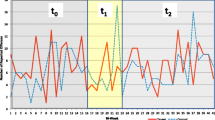Abstract
Despite the advent of modern crime control methods, chiefly brought about by technological advancement, foot patrol has remained as one of the crucial crime prevention methods in both the developed and developing world. This study was aimed at describing the implementation of foot beat patrols in Harare Central Business District (CBD), Zimbabwe. The study also attempted to gauge perceptions from police officers on the effectiveness of foot beat patrols as a crime control strategy. The study revealed that hot spot patrols and high visibility are the most widely used patrol initiatives in Harare CBD. Foot patrols were widely viewed to be effective in reducing specific crimes/problems such as assault, loitering, touts, plain robbery and pick pocketing. It was also felt that reduction in specific crimes within the central business district also lowers the aggregate crime levels for the whole city. Reduction in fear of crime and provision of a reassuring presence were also considered to be the major benefits of foot patrols by community representatives.
Similar content being viewed by others
References
Bond, C., and D. Gow. 1996. Policing the beat: The experience in Toowoomba, Queensland. Crime Prevention Studies 7: 153–173.
Braga, A.A. 2001. The effects of hot spots policing on crime. The Annals of American Political and Social Science 578: 104–125.
Braga, A.A. 2007. The effects of hot spots policing on crime. Campbell Collaboration systematic review final report. Available online at: http://campbellcollaboration.org/lib/download/118/.
Bratton, G. 2000. Crime placement, displacement, and deflection. Chicago: An Annual Review of Research, University of Chicago Press.
Bruce, C.W. 2008. Police strategies and tactics: What every analyst should know. International Association of Crime Analysts, July 31.
Esbensen, F.A. 1987. Foot patrols: Of what value. American Journal of Police 6: 45–65.
Greene, J.R., ed. 2007. Patrol, types and effectiveness of. In The encyclopedia of police science, vol. 1, 898–899. New York: Taylor & Francis Group.
Jones, N., and M. Tilley. 2004. Understanding and preventing police corruption: Lessons from the literature. London: Research, Development and Statistics Directorate.
Kelling, G.L., A. Pate, A. Ferrara, M. Utne, and C.E. Brown. 1981. The Newark foot patrol experiment. Washington: Police Foundation.
Kelling, G.L., T. Pate, D. Dieckman, and C.E. Brown. 1974. The Kansas city preventive patrol experiment: A summary report. Washington: Police Foundation.
Kelling, G., M. Antony, and D. Pate. 2004. The Kansas City preventive patrol experiment: Technical report. Washington: Police Foundation.
Lum, C., C. Koper, and C.W. Telep. 2011. The evidence-based policing matrix. Journal of Experimental Criminology 7: 3–26.
McGarrell, C., M. James, and D. Shepherd. 2001a. Watching police, watching communities. London: Routledge Publisher.
McGarrell, E.F., S. Chermak, A. Weiss, and J. Wilson. 2001b. Reducing firearms violence through directed police patrol. Criminology and Public Policy 1: 119–148.
Melenka, N.K.M. 2016. Exploring the long-term impact of a Foot Patrol policing Initiative in North Vancouver, British Columbia, Canada. Masters Dissertation: Simon Fraser University.
Piza, E.L., and B.A. O’Hara. 2012. Saturation foot patrol in a high-violence area: A quasi-experimental evaluation. Justice Quarterly 31(4): 1–26. https://doi.org/10.1080/07418825.2012.668923.
Piza, E.L., and B.A. O’Hara. 2014. Saturation foot-patrol in a high-violence area: A quasi-experimental evaluation. Justice Quarterly 31(4): 693–718.
Ratcliffe, J.H., T. Taniguchi, E.R. Groff, and J.D. Wood. 2011. The Philadelphia foot patrol experiment: A randomized controlled trial of police patrol effectiveness in violent crime hotspots. Criminology 49(3): 795–831.
Rosenfeld, R. 2014. Crime and inflation in cross-national perspectives. Crime and Justice 43(1): 341–366. https://doi.org/10.1086/677665.
Sherman, L., and H. Weisburd. 2012. Scandal and reform: Controlling police corruption. New York: Berkeley Publisher.
Skogan, C., and D. Frydl. 2004. What works in policing. New York: Anderson Publishing.
Smith, T.R., and J. Scott. 2013. Policing and crime prevention. In Crime prevention, ed. D.A. Mackey and K. Levan, 61–92. Burlington: Hones & Bartlet Learning.
Telep, G., and Y. Weisburd. 2012. The politics of the police. London: Hemel Hempstead Publisher.
Tuffin, M., L. Maxerolle, and J. Roehl. 2006. Controlling drug and disorder problems: The role of place managers. Portland, OR: Willan Publishing.
Wakefield, J. 2006. Varieties of police behaviour. Cambridge: Mass Publisher.
Wilson, Y. 2013. The politics of the police. London: Hemel Hempstead Publisher.
Author information
Authors and Affiliations
Corresponding author
Rights and permissions
About this article
Cite this article
Mugari, I., Thabana, N. Foot patrols and crime prevention in Harare Central Business District: police officers’ perspectives. Crime Prev Community Saf 20, 113–124 (2018). https://doi.org/10.1057/s41300-017-0038-z
Published:
Issue Date:
DOI: https://doi.org/10.1057/s41300-017-0038-z




